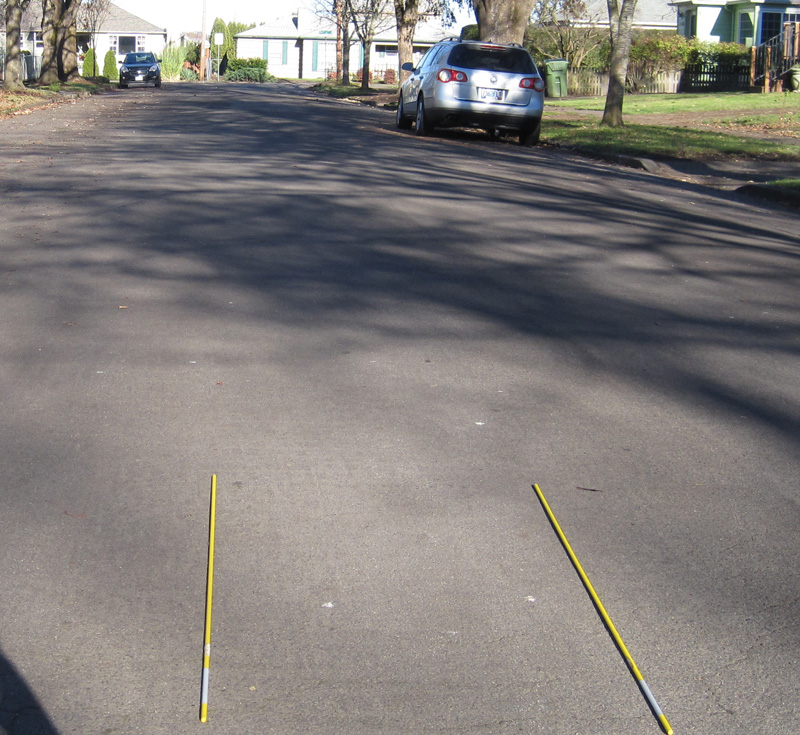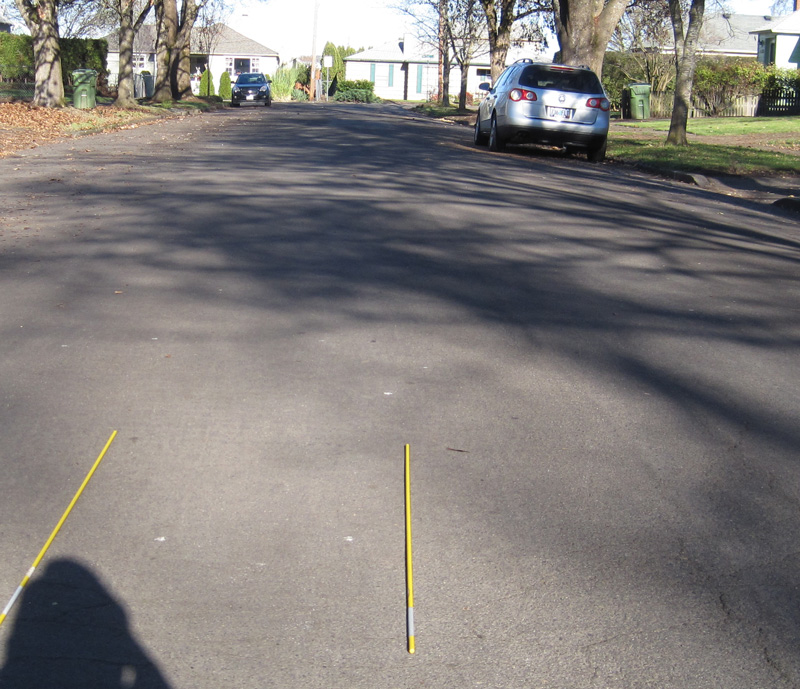Last week we talked about getting into your setup using two lines, one for the clubface and one for your stance. These lines are shown in the two photos below.
They were taken in the street in front of my house so the aiming points in the background would be easier to see. Though it doesn’t look like it in the photographs, the two sticks are parallel to each other.

|

|
Look at the photo on the right (click to enlarge). The alignment stick is pointed at the white chimney. This is the ball’s target, toward which the clubface is aimed.
The alignment stick in the photo on the left is in the place where you would stand to hit the shot (click to enlarge). It is pointing at the edge of the house.
Yes, I know the sticks are only a few feet a part and if you extended them to the house they would still be a few feet a part. What is important here is appearance, not reality.
If you look downrange before you start your swing, you have to look at the right target. That is the one you are aimed at, not the one the clubface is aimed at.
If you look at the ball’s target, you create a conflict in your mind. Your body is a lined up in one direction (the edge of the house), but your mind is looking in a different direction (the chimney).
As a result, there will be a subtle confusion about where to direct your swing. This creates a discomfort which can be interpreted as a swing technique thing, even though that is not where the problem lies.
When you’re in your stance, ready to take the club back, take one more look down the fairway. Look at where your body is aimed, a place to the left of the ball’s target, because that is the direction the swinging motion of your body, standing to the left of the ball, will be directed toward.
If you swing toward that spot, the clubhead, which is displaced to the right of where you are standing, will automatically be swung toward the ball’s target.
Most of all, the the conflict I referred to above never arise. Only a feeling of confidence will be felt. That leads to your best swing coming out, and thus your best shots.

